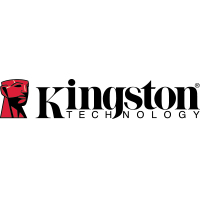mikeymikec
Lifer
- May 19, 2011
- 21,013
- 16,265
- 136
The only USB drives I've had go faulty on me were the physically longer drives, and because I typically put them in the money pocket of my jeans, when I sat down they'd get bent a little. Since I discovered that, I kept the rubber cap from one of the drives that died and bought this:

 www.kingston.com
www.kingston.com
It's pretty sturdy and with the cap on there's no chance any crap can get in the plug end.
I agree with corkyg though, when you can buy a flash drive for a fiver, I wouldn't expect it to be the most durable bit of kit known to man. My flash drive's contents are mostly backed up regularly and the remaining data I doubt I'd lose much sleep over.
In terms of durability, I have one other bit of advice: Avoid the ones with plastic USB plugs.
I still have my first work flash drive, 4GB and is shaped like an elongated M&M (about an inch long).

USB Flash Drives for personal, business and encrypted data needs - Kingston Technology
Kingston DataTraveler and IronKey USB flash drives provide on-the-go file storage for photos, music, video and more. They are available in both standard and encrypted security for home, school, office and enterprise organisations.
It's pretty sturdy and with the cap on there's no chance any crap can get in the plug end.
I agree with corkyg though, when you can buy a flash drive for a fiver, I wouldn't expect it to be the most durable bit of kit known to man. My flash drive's contents are mostly backed up regularly and the remaining data I doubt I'd lose much sleep over.
In terms of durability, I have one other bit of advice: Avoid the ones with plastic USB plugs.
I still have my first work flash drive, 4GB and is shaped like an elongated M&M (about an inch long).


